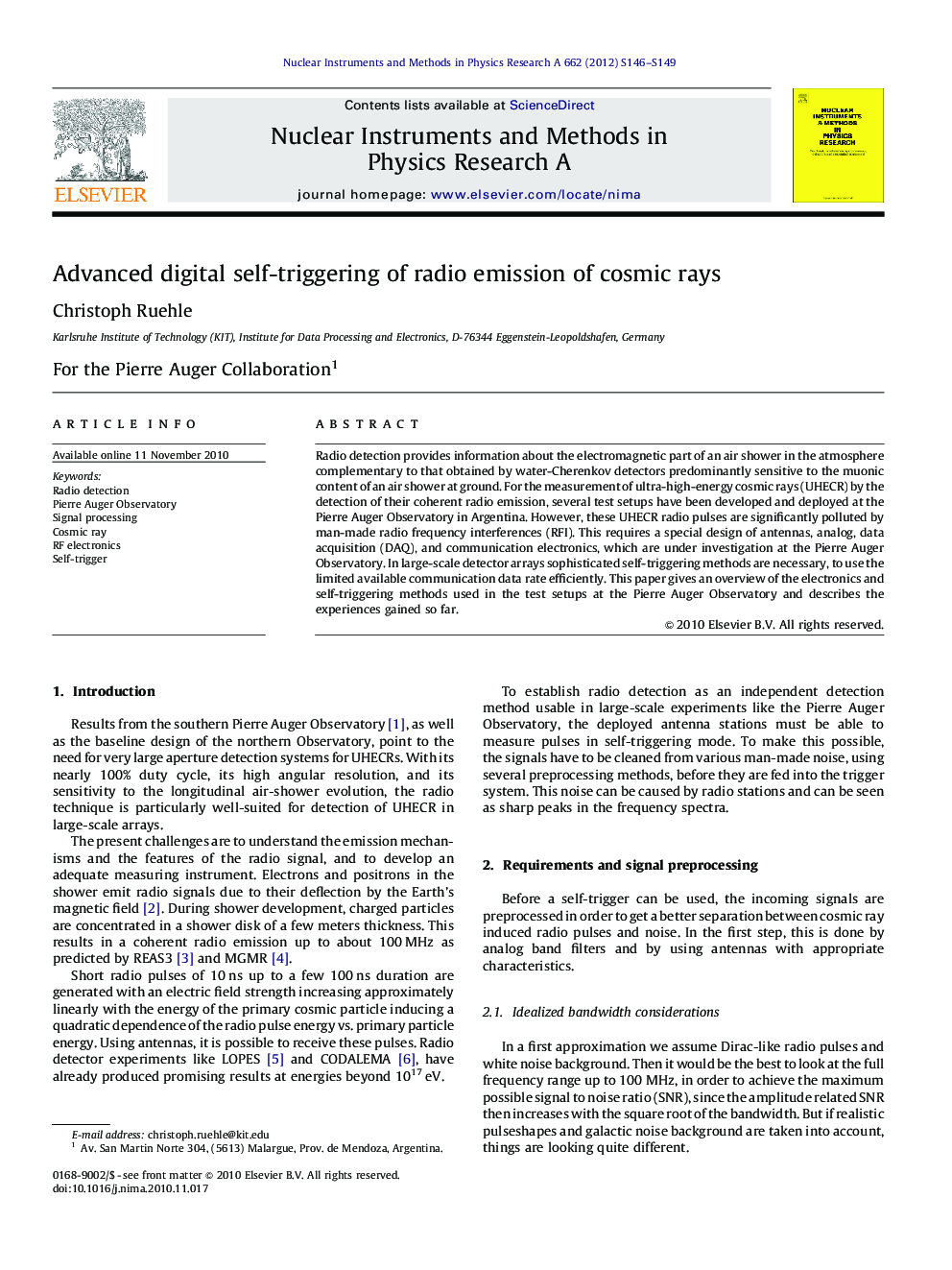| Article ID | Journal | Published Year | Pages | File Type |
|---|---|---|---|---|
| 1823941 | Nuclear Instruments and Methods in Physics Research Section A: Accelerators, Spectrometers, Detectors and Associated Equipment | 2012 | 4 Pages |
Abstract
Radio detection provides information about the electromagnetic part of an air shower in the atmosphere complementary to that obtained by water-Cherenkov detectors predominantly sensitive to the muonic content of an air shower at ground. For the measurement of ultra-high-energy cosmic rays (UHECR) by the detection of their coherent radio emission, several test setups have been developed and deployed at the Pierre Auger Observatory in Argentina. However, these UHECR radio pulses are significantly polluted by man-made radio frequency interferences (RFI). This requires a special design of antennas, analog, data acquisition (DAQ), and communication electronics, which are under investigation at the Pierre Auger Observatory. In large-scale detector arrays sophisticated self-triggering methods are necessary, to use the limited available communication data rate efficiently. This paper gives an overview of the electronics and self-triggering methods used in the test setups at the Pierre Auger Observatory and describes the experiences gained so far.
Related Topics
Physical Sciences and Engineering
Physics and Astronomy
Instrumentation
Authors
Christoph Ruehle, For the Pierre Auger Collaboration For the Pierre Auger Collaboration,
